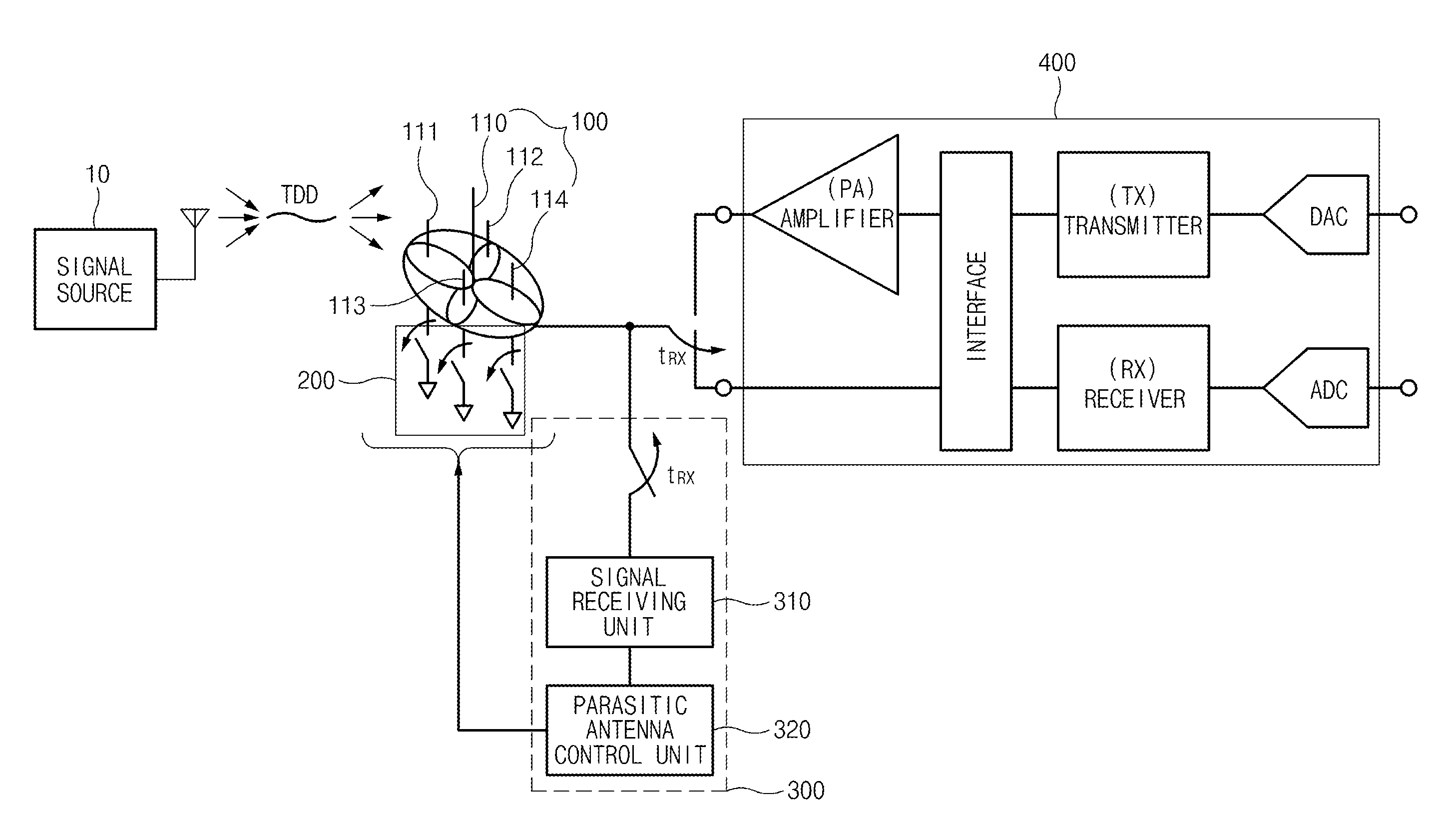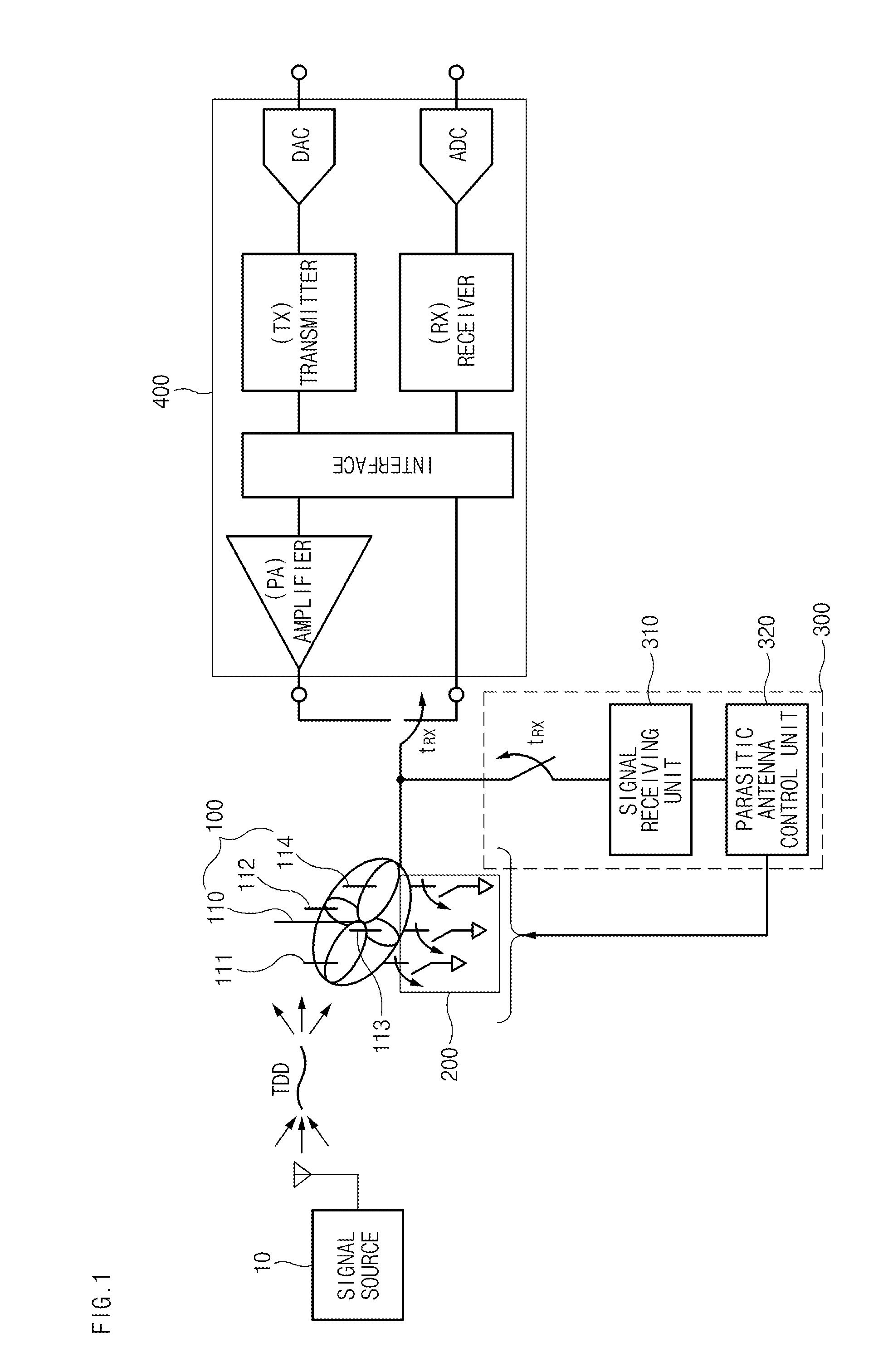Smart antenna system and method for improving receiving performance thereof
- Summary
- Abstract
- Description
- Claims
- Application Information
AI Technical Summary
Benefits of technology
Problems solved by technology
Method used
Image
Examples
Embodiment Construction
[0042]Hereinafter, the most preferred exemplary embodiments of the present invention will be described in detail with reference to the accompanying drawings so that those skilled in the art may easily carry out the technical spirit of the present invention.
[0043]The present invention suggests a technique which compares strengths of received signals to form a beam toward a largest signal without using a complex mathematical model such as a channel model of the related art or a beam forming algorithm, thereby improving sensitivity of the signal. That is, when a reactance load of the parasitic antenna at which a characteristic of the received signal, such as a signal to noise ratio (SNR) or an adjacent channel leakage ratio (ACLR), is maximized is adjusted, the direction of the beam is changed and thus a direction of the beam which has optimal reception sensitivity may be determined.
[0044]Hereinafter, exemplary embodiments of the present invention will be specifically described with re...
PUM
 Login to View More
Login to View More Abstract
Description
Claims
Application Information
 Login to View More
Login to View More - R&D Engineer
- R&D Manager
- IP Professional
- Industry Leading Data Capabilities
- Powerful AI technology
- Patent DNA Extraction
Browse by: Latest US Patents, China's latest patents, Technical Efficacy Thesaurus, Application Domain, Technology Topic, Popular Technical Reports.
© 2024 PatSnap. All rights reserved.Legal|Privacy policy|Modern Slavery Act Transparency Statement|Sitemap|About US| Contact US: help@patsnap.com










